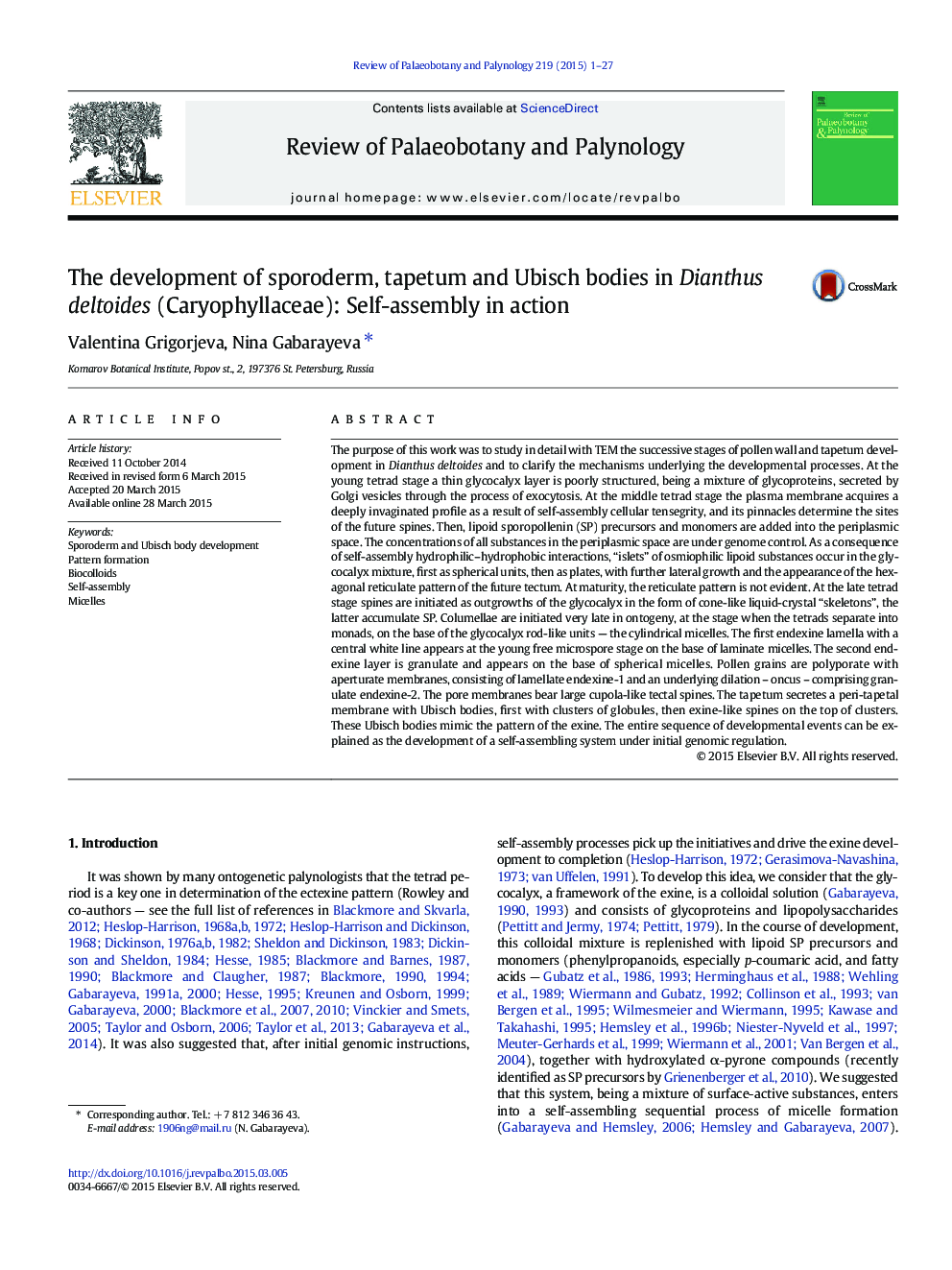| کد مقاله | کد نشریه | سال انتشار | مقاله انگلیسی | نسخه تمام متن |
|---|---|---|---|---|
| 6448663 | 1642479 | 2015 | 27 صفحه PDF | دانلود رایگان |

- All the developmental stages bear witness of self-assembly activity.
- The tetrad period events are based on three first mesophases of micellar systems.
- The post-tetrad period events are based on more complex micellar mesophases.
- The patterns of Ubisch bodies and of the exine are similar.
- Micellar self-assembly plays an important role in the development of the exine and Ubisch bodies.
The purpose of this work was to study in detail with TEM the successive stages of pollen wall and tapetum development in Dianthus deltoides and to clarify the mechanisms underlying the developmental processes. At the young tetrad stage a thin glycocalyx layer is poorly structured, being a mixture of glycoproteins, secreted by Golgi vesicles through the process of exocytosis. At the middle tetrad stage the plasma membrane acquires a deeply invaginated profile as a result of self-assembly cellular tensegrity, and its pinnacles determine the sites of the future spines. Then, lipoid sporopollenin (SP) precursors and monomers are added into the periplasmic space. The concentrations of all substances in the periplasmic space are under genome control. As a consequence of self-assembly hydrophilic-hydrophobic interactions, “islets” of osmiophilic lipoid substances occur in the glycocalyx mixture, first as spherical units, then as plates, with further lateral growth and the appearance of the hexagonal reticulate pattern of the future tectum. At maturity, the reticulate pattern is not evident. At the late tetrad stage spines are initiated as outgrowths of the glycocalyx in the form of cone-like liquid-crystal “skeletons”, the latter accumulate SP. Columellae are initiated very late in ontogeny, at the stage when the tetrads separate into monads, on the base of the glycocalyx rod-like units - the cylindrical micelles. The first endexine lamella with a central white line appears at the young free microspore stage on the base of laminate micelles. The second endexine layer is granulate and appears on the base of spherical micelles. Pollen grains are polyporate with aperturate membranes, consisting of lamellate endexine-1 and an underlying dilation - oncus - comprising granulate endexine-2. The pore membranes bear large cupola-like tectal spines. The tapetum secretes a peri-tapetal membrane with Ubisch bodies, first with clusters of globules, then exine-like spines on the top of clusters. These Ubisch bodies mimic the pattern of the exine. The entire sequence of developmental events can be explained as the development of a self-assembling system under initial genomic regulation.
Journal: Review of Palaeobotany and Palynology - Volume 219, August 2015, Pages 1-27